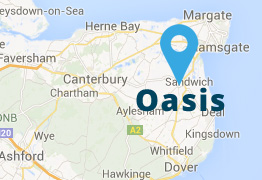 If you’re wondering how to prepare your swimming pool for Winter, this article is a practical, step-by-step guide to help you correctly “Winterise” your pool. For best results, wait until the ambient temperature has dropped below 10°C to allow the winter chemicals to work efficiently.
If you’re wondering how to prepare your swimming pool for Winter, this article is a practical, step-by-step guide to help you correctly “Winterise” your pool. For best results, wait until the ambient temperature has dropped below 10°C to allow the winter chemicals to work efficiently.
Why do I need to shut down my pool?
Closing down your pool for the winter season precisely is paramount to preventing the damage that can potentially be caused by the freezing winter temperatures. If you leave your pool with unbalanced water you will open it up to find that the water has either become corrosive or has left hard scaly deposits. Ensuring that the water is clean and contains the right chemicals can save a lot of time, money and effort when it comes to re-opening the pool in spring. What follows is intended as a guide only and does not replace manufacturer’s instructions which should always be followed with the utmost care and attention.
What do I need to close my pool for the winter?
There are a few things you may find you’ll need in order to winterise your swimming pool. It’s good practise to repair or replace any broken equipment, as the winter weather may exacerbate the problem and it’s nice to know that come springtime you won’t need to dread re-opening your pool.
- Balancing chemicals
- pH Plus
- pH Minus
- Calcium Hardness
- Total Alkalinity Increaser
- Granular Shock Chlorine/Non Chlorine Shock
- Fi-Clor Winteriser
- A good quality Winter Debris Cover
- Telescopic Pole
- Vacuum Equipment
- Net
Step 1 – Clean Your Swimming Pool
Top up the water level.
Scoop out all of the debris with your net and pole
Scrub the walls and floors with a pool brush to ensure there are no algae clinging on anywhere. If algae spores are present; shock, floc and vacuum to waste.
If grubby, clean the waterline with Waterline Cleaning Gel. It’s easier to do it now rather than wait for spring when it’s will be a pain to remove.
Thoroughly vacuum your pool and then backwash and rinse your filter.
Step Two – Balance & Sanitise your Pool’s Water
About a week before you plan to close the pool down, take a sample of your pool water to your local swimming pool dealer (those of you in the area are welcome to come to us). Over the next couple of days, make sure your water is perfectly balanced by adjusting the chemistry as needed;
- Your pH should be between 7.2 – 7.6
- Your Total Alkalinity should be between 80 – 140ppm
- Your Calcium Hardness should be between 180 – 220ppm
Once your pool water is within the ranges above, add a large dose of Granular Shock Chlorine. This should be a big enough dose to spike the chlorine levels to around 10ppm. Allow the chlorine levels to drop to about 3ppm before adding Fi-Clor Winteriser. Our Fi-Clor Winterizer should be added at a dose rate of 1.75 litres for every 11,000 gallons (50m3) of water in your pool (that’s 1.59 litres per 10,000 gallons). Allow to circulate for at least 12 hours before turning the filtration system off.
Step Three – Pool Equipment Maintenance
Remove drain plugs from your filter, pump, heater, chlorinator and store in pump basket. Ensure that all of the water is drained/blown out. Cartridge filters and D.E. grids should be removed and thoroughly cleaned. All plugs and O rings that have been removed should be kept together in the pump basket so that they can be easily found in the spring. Lubricate fixings as necessary.
Disconnect pump from pipe work. If your plant room is subject to damp/freezing conditions, consider storing indoors if possible. Turn the multiport valve to the closed or winterise position and remove the pressure gauge.
Step Four – Swimming Pool Water Levels
This can vary from pool to pool so always follow manufacturer’s instructions carefully. Generally, you can lower the pool water level so that it is about 6 – 10 inches below the skimmer. Any water left in the circulatory system is liable to freeze and crack your pipe work and skimmers, so ensure that you drain the water out thoroughly and use a blower if necessary to force the water back into the pool. Plug the lines to prevent water flowing back through the pipe work.
Do not drain the water too low as this can cause the liner to become brittle and even for some pools to completely collapse! If you are at all unsure, contact the original pool builder/manufacturer.
For above ground pools; – if possible detach the pipe work from the skimmer so that if the water level gets too high due to excessive rainfall the water will empty out rather than sitting in the skimmer waiting to freeze (and crack the skimmer!). It is good practise to attach a separate pipe to take overflow water away from the pool surround.
Step Five – Pool Fittings Maintenance
Remove, clean and appropriately store pool fittings such as ladders, slides, diving boards, hand rails, solar cover, skimmer basket(s) etc… Please note that solar covers in particular should be thoroughly cleaned and stored away from where the mice can get to them! You should not leave any floating chemical dispensers such as the 5 Buoy or Mini Buoy as there is insufficient circulation; the device will just sit at the side of the pool and bleach whatever it comes into contact with. Likewise you should remove any chlorine/bromine from automatic dosing systems.
Step Six – Freeze Protection for your Pool
Half fill plastic containers (emptied and rinsed out large chemical tubs are perfect) with small pebbles, sand or antifreeze solution so that they float half in and half out of the water. Tie together along the middle of the pool; if the water freezes this should absorb the pressure so that it doesn’t damage the pool shell. Partially fill a small container to the specifications above and put in the skimmer, although it is empty now it may fill up if the levels rise high enough due to rainfall. This is only necessary if you cannot detach the pipe work from the skimmer as you would in an above ground pool.
Step Seven – Attach Swimming Pool Cover
Attach your winter debris cover securely according to the instructions but do not over-tighten. If your cover is torn and you think it may not last, consider replacing it to ensure that nothing can get into the pool until you want it to.
During the winter months
If you experience extremely heavy rainfall and do not have an overflow system you must check that the water levels have not crept up too high. It is well worth following step six for the skimmer just in case the level gets too high without you noticing.
If the winter is mild, you may need to add another dose of Fi-Clor Winteriser around February. This is also necessary if you have closed the pool down too early.
By following the above, in conjunction with manufacturer’s instructions, re-opening the pool in the spring should be easy and horror-free! The products mentioned are all available for purchase at lowest UK prices from our web shop, our sister site Oasis Pool Products have set up a one-stop Winter Pool Supplies section. If you require any further information please contact us today.

